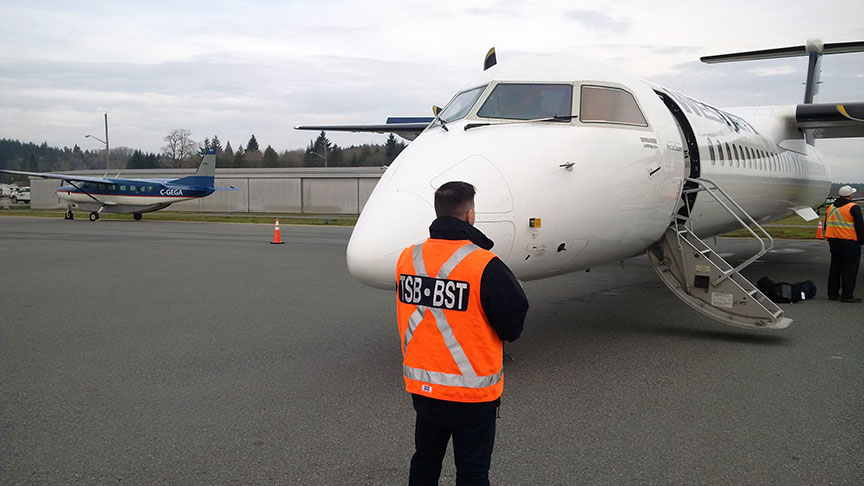In-flight emergency due to smoke in cockpit and cabin
WestJet Encore Ltd.
Bombardier DHC-8-402, C-GJEN
Nanaimo Airport, British Columbia
The occurrence
On , while on approach to the Nanaimo Airport, British Columbia, the crew of a WestJet Encore Bombardier DHC-8-402 declared an emergency due to smoke in the cabin. The aircraft landed at Nanaimo and the passengers and crew evacuated onto the runway. There were no reported injuries.
Media materials
News release
Investigation report: March 2018 in-flight emergency due to smoke in cockpit and cabin at Nanaimo Airport, British Columbia
Read the news release
Deployment notice
TSB deploys a team of investigators at the Nanaimo Airport, British Columbia, following an incident aboard an aircraft
Vancouver, British Columbia, 21 March 2018 - The Transportation Safety Board is deploying a team of investigators at the Nanaimo Airport in British Columbia following an incident aboard a WestJet Encore flight. The TSB will gather information and assess the occurrence.
Investigation information
Download high-resolution photos from the TSB Flickr page.
Class of investigation
This is a class 4 investigation. These investigations are limited in scope, and while the final reports may contain limited analysis, they do not contain findings or recommendations. Class 4 investigations are generally completed within 220 days. For more information, see the Policy on Occurrence Classification.
TSB investigation process
There are 3 phases to a TSB investigation
- Field phase: a team of investigators examines the occurrence site and wreckage, interviews witnesses and collects pertinent information.
- Examination and analysis phase: the TSB reviews pertinent records, tests components of the wreckage in the lab, determines the sequence of events and identifies safety deficiencies. When safety deficiencies are suspected or confirmed, the TSB advises the appropriate authority without waiting until publication of the final report.
- Report phase: a confidential draft report is approved by the Board and sent to persons and corporations who are directly concerned by the report. They then have the opportunity to dispute or correct information they believe to be incorrect. The Board considers all representations before approving the final report, which is subsequently released to the public.
For more information, see our Investigation process page.
The TSB is an independent agency that investigates air, marine, pipeline, and rail transportation occurrences. Its sole aim is the advancement of transportation safety. It is not the function of the Board to assign fault or determine civil or criminal liability.

